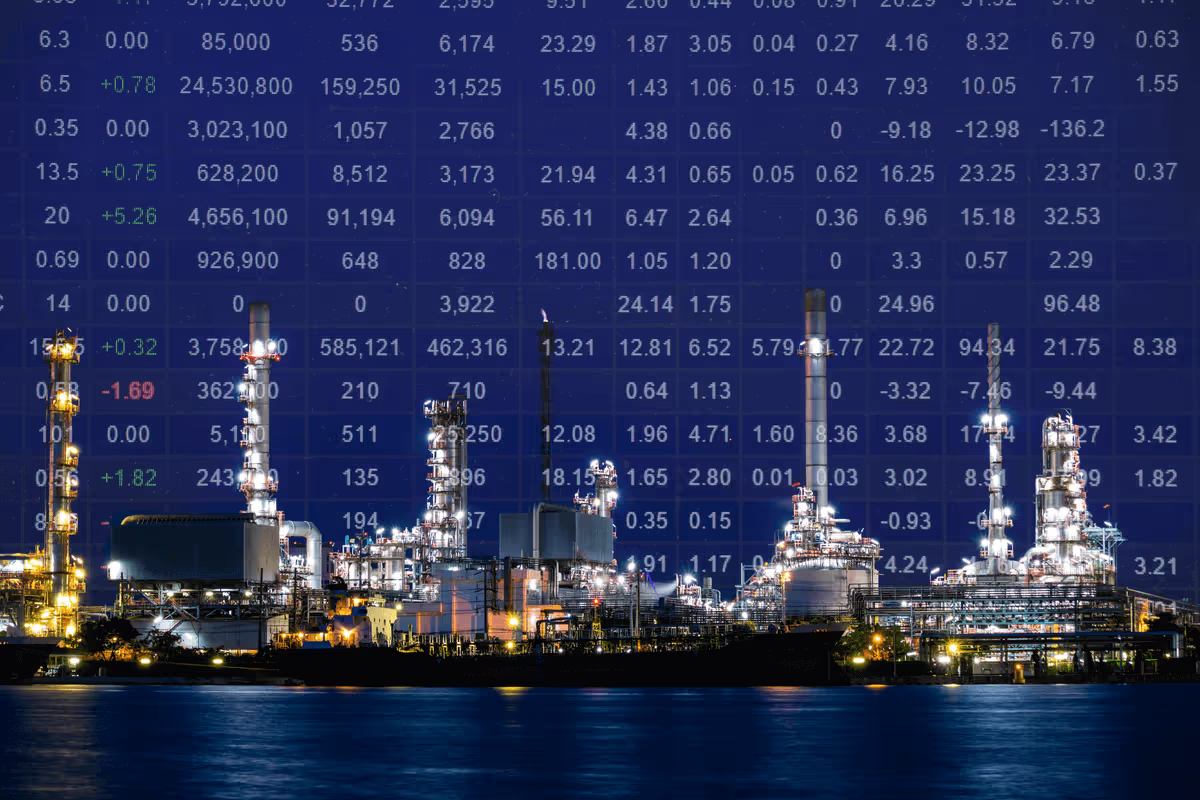

Russia’s seaborne crude oil flows are trying to find new destination countries, while the US has already set a trade embargo on Russian oil. The E.U. is in the process of discussions for final approval by all member countries in the next six months with wavering uncertainty for potential alternative sources to replace the Russian crude oil. In March, the situation was too premature for the potential implications of international sanctions on the global oil production and seaborne transportation; and whether there will be decisions from Western countries to move forward with drastic actions on diminishing Russian oil supplies.
It is undeniable that Russia plays an large role in global oil markets with a tremendous impact on crude oil as it is the world’s second-largest exporter behind Saudi Arabia. According to IEA, Russia’s total oil production was 11.3 mb/d in January 2022, of which 10 mb/d was crude oil, while US total oil production was 17.6 mb/d and Saudi Arabia produced 12 mb/d.
The position of Russia on the supply of oil to importing countries has a high impact on the development of oil prices, while the ongoing geopolitical uncertainties are gradually changing the existing patterns of oil flows. In addition, the oil industry is still facing supply uncertainties from the COVID-19 pandemic and employment issues like many other industries.
The question is how reliant is the world on Russian oil production, with the United States announcing on March 8th the ban on Russian oil imports. For the U.S. oil imports, Russia held a small percentage of 8% of the total US imports of crude oil and petroleum products. We will view with Signal Ocean Data, that America relies on most of its crude imports from Canada, Mexico, and Saudi Arabia.
In the meantime, the E.U. seems not yet ready to convince all member states to vote for an embargoed countries policy. Hungary and Slovakia have an extension till 2024 to replace Russian oil supplies. Nevertheless, Hungary is still against an embargo or economic sanctions approach. In addition, Bulgaria was warned that it couldn’t vote on the trade embargo unless it also receives an exemption. The rest of the European countries will have a grace period of six months to cease their oil purchases from Russia and replace them with imports from elsewhere, while, for oil products, the proposed grace period is eight months. The consequences of an E.U. trade embargo on Russia oil could have a catastrophic impact on the supply.
Russia has already warned that the current situation is already causing a series of side effects on supply and oil prices surging that seem at the moment manageable but the future is at high risk. The oil supply market could face a severe shortage if the strategy of replacement is not yet fully scheduled and feasible. For the Russia oil production, if a trade embargo is agreed upon by all E.U. members, there could be a decrease to 9.6 million barrels per day, according to estimates made by the International Energy Agency. This would be the lowest since 2004 and would happen at a time when the global oil supply continues to be tight amid rising oil demand, despite lockdowns in China.
Thus the riskiness nowadays comes from how easy is it for the worldwide top crude oil-consuming countries to find alternatives to Russian oil? There are already tactical measures from the U.S. and members of I.E.A to tackle potential oil shortage supply and avert the further increase in oil prices surging. At the beginning of April, some countries, members of the IEA, released the equivalent of 120 million barrels from oil stocks - the largest release of reserves in its history. The decision was followed after one month Biden ordered an 'unprecedented' release of oil reserves. The release was up to 180m barrels of oil over six months and is considered the largest since the reserve was created in 1974.
Lastly, it is interesting to mention that OPEC's stance on the current situation is neutral as their last meeting in May held their production volume unchanged from last year’s plans. OPEC members agreed to continue raising their collective production by 432,000 barrels a day. This comes against repeated calls from the U.S. and other major oil-consuming nations for Saudi Arabia and other OPEC+ members to tap into the group’s millions of barrels of remaining capacity to pump more oil to help the drop in prices.
In the below sections, we will review worldwide oil flows with a focus on the crude oil tanker segment and changing trends we see at this moment in Europe, the U.S., and Asia for the reliance on Russia oil imports.
Oil Flows - The Worldwide Picture 2020 -2022
We see a minor decrease of less than 1% in oil flows from March to April. Overall, the first quarter of the year ended with no significant decrease in the daily average volume of flows amid the increased geopolitical uncertainty. (Image 1)
.avif)
In the top products, we see Crude Oil snapping 60% share of the flows, Gasoil 10%, Gasoline 9%, Fuel Oil 7%, Diesel 5%, Naphtha 4%, and Jet 1.4%. In the crude segment, VLCC size and Aframax holds a 24% share each compared to 15% by Suezmax size. (Image 2)
.avif)
In the top origin countries, we can view Saudi Arabia ranking in the first position with 10%, the United States in the second position with 9%, and Russian Federation in the third ranking with 8% share. In the top destination countries, China is ranking above the United States with a 16% share versus 9% of the United States and India follows with a 7% share. (Image 3)

Oil flows to the U.S. Destination Country | Their dependence on Russian supply
After the official announcement of the U.S. ban on Russian oil imports, the daily exported volume of crude flows from Russia to the U.S. dropped instantly, reflecting the declining reliance on Russian crude, (Image 4). It is noteworthy to remind here that the U.S. turned to Russian oil after sanctions were imposed on Venezuela in 2019 as Venezuelan crude oil has similar characteristics to Russian crude. However, the latest Russia-Ukraine tensions triggered the decision of the U.S. to end their relationship with the world’s second-largest oil exporter and increase their self-dependence in the short term. In the below image, we can view the US decrease in Russian oil imports during March and April, while the last high was seen in February.

What are the countries the US relies primarily on crude oil imports?
We can view, as we mentioned earlier, (Image 5), Mexico (15% share), Saudi Arabia (8% share), and Canada (5%), but mostly their dependence on their reserves is in the first position with 40% share. Aframax tanker size appears to overtake other crude tanker vessel sizes with a 50% share compared to 29% share of Suezmax and 14% share of VLCC.

The worldwide scene is wondering whether the U.S. could replace imports with their domestic production. There is an unconfirmed belief that the U.S. could replace Russian oil by increasing domestic production — though some cautioned there might be a lag. In the meantime, the U.S. has launched efforts to ease curbs, which falls under sanctions with Iran, and Venezuela to boost oil supply.
Oil Flows to Europe
Overall oil flows to European destinations are steadily increasing following the ending of the first six months of last year (Image 6). The daily average volume of flows to Europe reached April one of the highest points over the previous twelve months, while the Russian oil trade embargo is not yet in the final approval stage by all member states.

In Image 7, we see crude oil in the top ranking with a 61% share and Aframax size with the largest share in the oil flows to Europe (39%) versus 20% of Suezmax size.

In image 8, we can view the top destination European countries with the most significant shares of the crude flows to Europe. In the top-origin countries, Russia is first for crude flows to Europe with a 28% share against 9% of Norway. The top destinations appear the Netherlands, Italy, Spain, France, and Greece, while Germany is weighing its alternatives to end its dependence on Russian oil over the next six months

Germany has already stated that it will end Russian oil imports by the end of the year, whether or not the EU agrees to a total trade embargo. The government in Berlin is already negotiating with alternative oil suppliers, Bloomberg reported, citing officials who declined to be named, and it is confident that the next six to seven months will be enough to solve the logistical problems surrounding such a complete switch of suppliers.
Changing patterns in the top European origin and destination countries
The latest announcement of Europe for the full force Russian oil embargo brought a new wave of flows from Norway to Europe, where we can view (Image 9) an increasing trend of daily cargo volume within February-March-April. It seems that Norway will play a substantial role in the next few months in the replacement of Russian oil flows to Europe.

The question comes to the Netherlands as the wider Rotterdam region is home to a number of oil refineries and chemical facilities with a heavy reliance on Russian oil. Other important large import countries to replace the gap can be Norway, the United States, and Nigeria, but they will need double the quantities to fill in the gap in Russian oil supplies, whereas another option could be to look at importing oil from the Arabian Gulf region. In Image 11, we can view a sudden increase in the volume of daily cargo oil flows from Nigeria to the Netherlands during March, while in April there was a return to levels seen during the last month of the year 2021.

Asia: Other potential destination countries for Russian crude oil purchases
There is a trend for a higher level of Russian oil purchases by Asian countries since February, however, this does not mean that the Russian oil production will not face a diminishing picture in its leading share of the oil supplies worldwide. The Russian crude oil production already recorded an almost 9% decrease in April, Reuters reported, quoting an internal report of OPEC+ secondary sources it had seen.
Overall, China, Korea, and India are emerging with the largest shares of Russian crude flows, 53% share, 27%, and 10% respectively, while Japan is in the process of gradually reducing their share with the Aframax size acquiring 74% share of the flows. (Image 10)

India, one of the largest Asian crude oil importing countries, has decided to go for more cheap Russian oil imports in the next month, while the government has defended its decision to buy Russian oil and stated what it buys from Russia in a month is less than what Europe buys from Russia in an afternoon. The South Asian nation is said to be seeking deeper discounts to compensate for the risk of dealing with the OPEC+ producer by seeking Russian cargoes at less than $70 a barrel on a delivered basis.
In the meantime, South Korea is envisioning life without Russian oil, although Russia is still in the top ranking for the South Korean oil purchases. Light sweet US crude is considered the country's best option to fill any Russian supply gaps. South Korean refiners indicated that they could still make purchases from Russian entities as Seoul has not officially banned any energy imports from Russia, but, Major South Korean refiners indicated they would have little problem sourcing alternatives to Russian crude oil, as Russian crudes is just 4% of South Korea's refining industry's overall feedstock imports.
Lastly, Japan has started to narrow the volume of crude flows from Russia. Japanese Foreign Minister Yoshimasa has already agreed with his counterparts from Britain, Canada, and France on the importance of the Group of Seven countries standing in unity towards the Russian oil embargo. However, the government intends to phase out Russian oil in a way that minimises adverse effects.
What can be the future of the oil market? Can Europe and other nations replace Russian crude oil?
It is a fact that the transition is already in the pipeline, but the scenarios for a full replacement are still in doubt as Russia is one of the most important major players in the energy market.
Europe and the U.S. could simultaneously increase crude oil sales from their national strategic stocks to lessen the impact of any further restrictions on Russian crude oil imports to the G-7. As we mentioned the U.S. is already selling 1.3 million barrels per day from its Strategic Petroleum Reserve and has said it will increase these flows. China has also released oil from its national strategic stocks to support the decrease in oil prices.
The U.S. and other G-7 members could also ask Middle East countries to relax destination restrictions on their crude oil shipments, and press countries like China and India to redirect other oils of similar quality to Russian oil back to Europe if they continue increasing their purchases from Moscow. It’s not yet clear whether China and India would cooperate and support Europe in replacing the oil supply shortage, but as they are major oil importers, they would not want to see oil price projections worsen. We recently read that the Biden Administration has started to release Venezuela for some oil sanctions.
Three potential countries that can replace Russian crude within the short term are: Iraq, Libya, and Iran, but each of these has its difficulties. Iraq and Libya remain unstable, while Iran itself is under sanctions, and it is unquestionable whether it will be able to unlock its supplies. The next six months will determine more the future trends in oil flows as the E.U. is weighing alternatives for replacement and the U.S. increases the production to tackle the increase in prices.
For the latest updates and insights, make sure to visit the Signal Ocean Newsroom website page. Click here to request a demo.
-Republishing is allowed with an active link to the source




Ready to get started and outrun your competition?















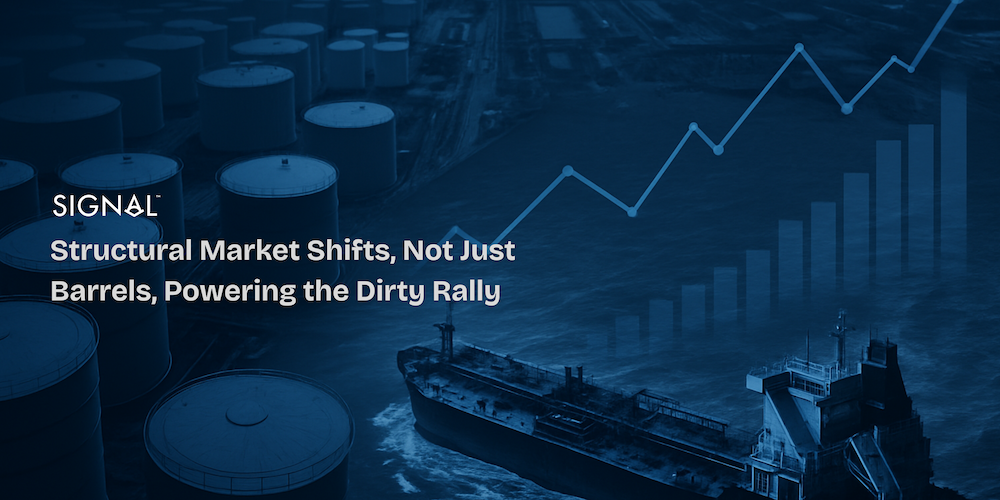


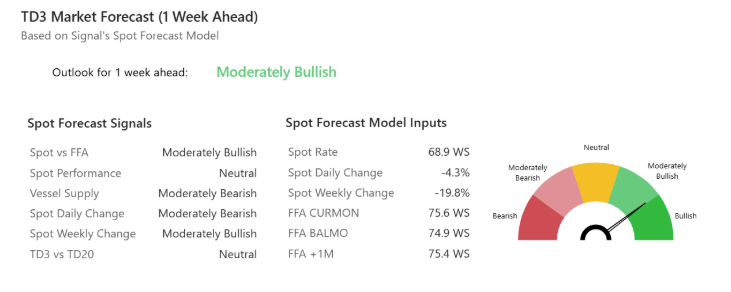



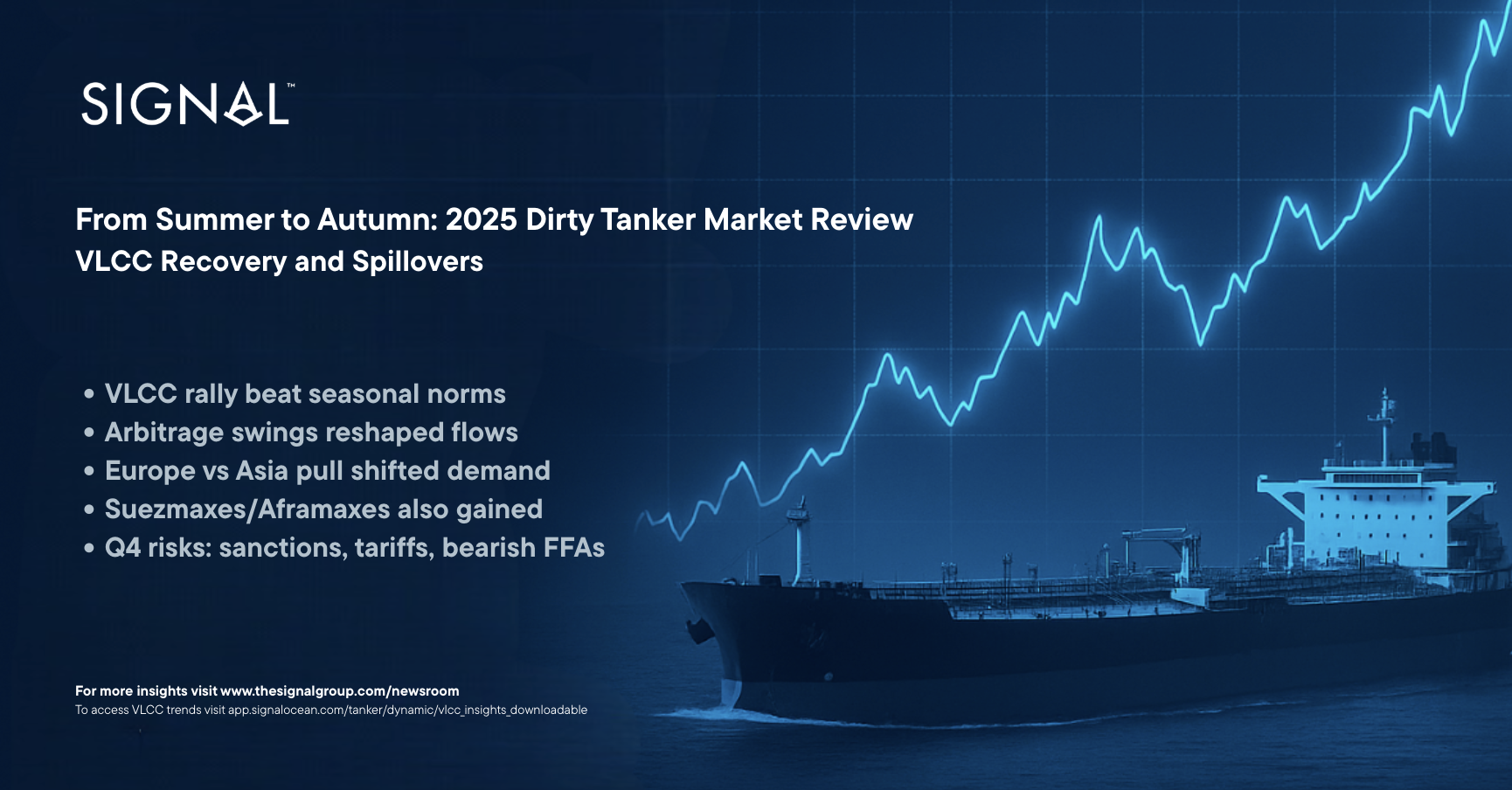
.png)
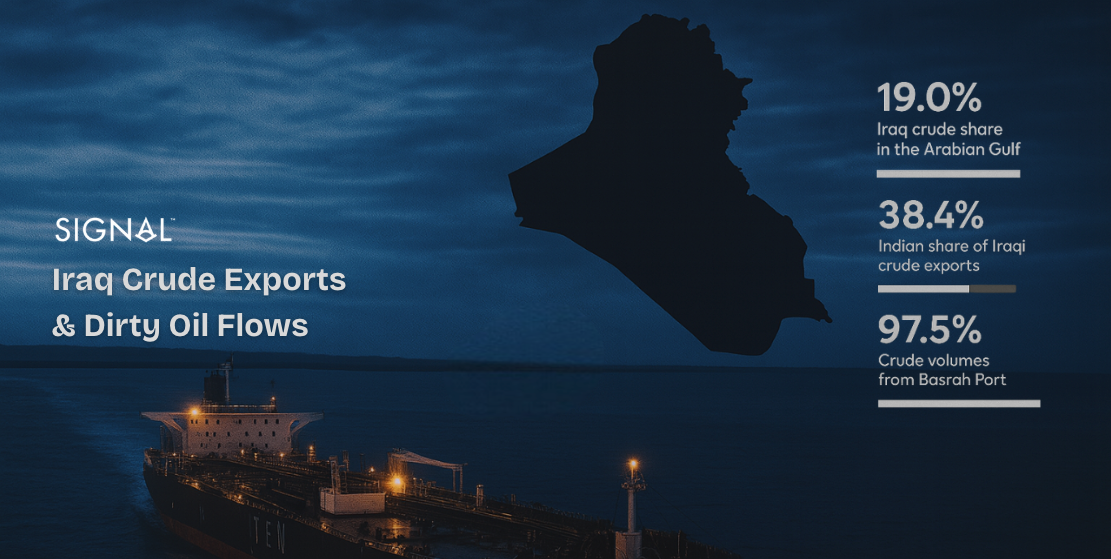




.png)

.png)

.png)
.png)

.png)







.avif)



.avif)




































